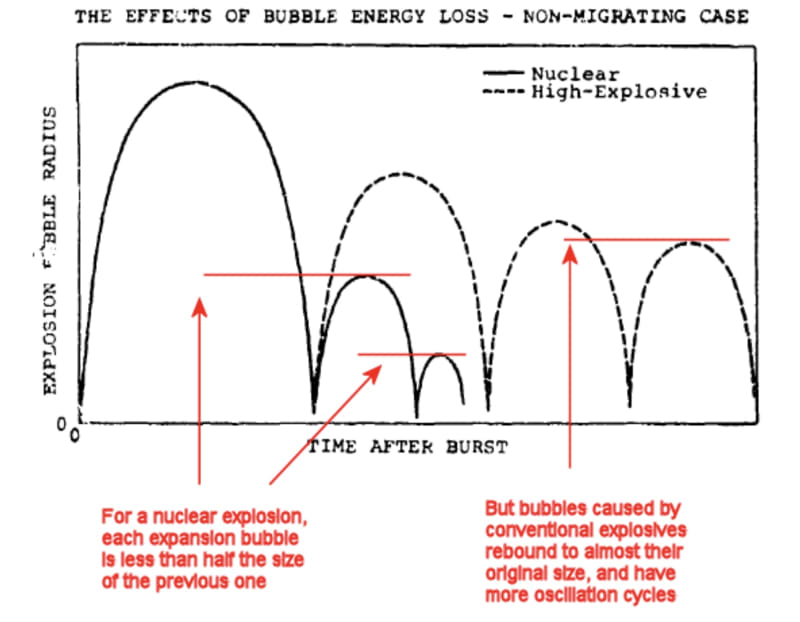SnTMan said:
SwinnyGG, thanks for the clarification, I am not overly familiar with the processes, and I did not mean to imply damage from de-molding played any part in the failure.
No worries. It's a niche process, one of those things most people never get exposed to.
1503-44 said:
1 ft3 of water under a pressure of 5000 psi (720k/ft2) will accelerate at 358ft/s^2
Respectfully, you have a unit conversion error somewhere, or something. You're off by multiple orders of magnitude
1 m
3 H
2O = 1025kg
Water pressure @ 3800m = 39,000 kPa = 39,000,000 N force over 1 m
2
f=ma
f/m=a
39,000,000N/1025kg =
38,050 m/s2. 125,000 ft/s.
That's 38 meters/s of velocity added
per millisecond. At the third millisecond of the event, the water/carbon/playstation controller/formerly human jelly is already traveling at 400+ f/s.
The total time to traverse the diameter of the hull is less than 10 milliseconds.
There's also another effect at play which hasn't been discussed really at all. At these pressures, the density of the water is increased 2.5-3% due to pressure effects. Any water instantaneously exposed to atmospheric pressure is also going to explosively expand, including gaseous cavitation of any dissolved gases present in the water. This effect increases the rate at which the 1 atm bubble inside the sub will close and equalize.
This is not something being bent under moderate pressure. The scenario we are discussing is literally an explosion in reverse. Huge amounts of pressure and energy are involved.

![[blush] [blush] [blush]](/data/assets/smilies/blush.gif) so my number should be 720,000 / 1.98 slugs= 358,000 ft/s^2
so my number should be 720,000 / 1.98 slugs= 358,000 ft/s^2 